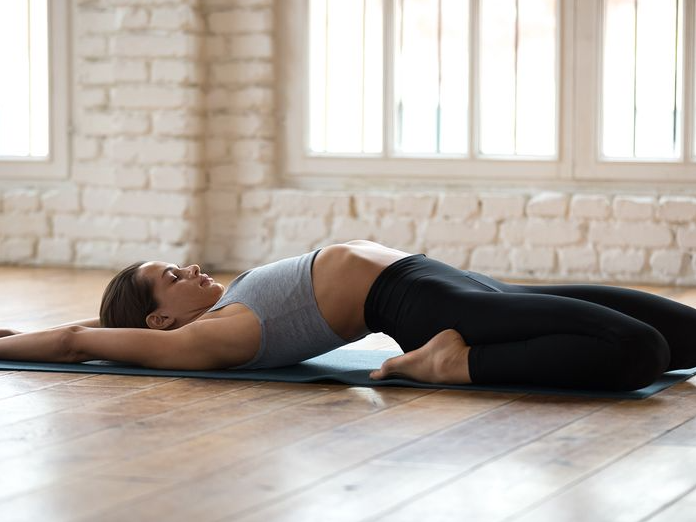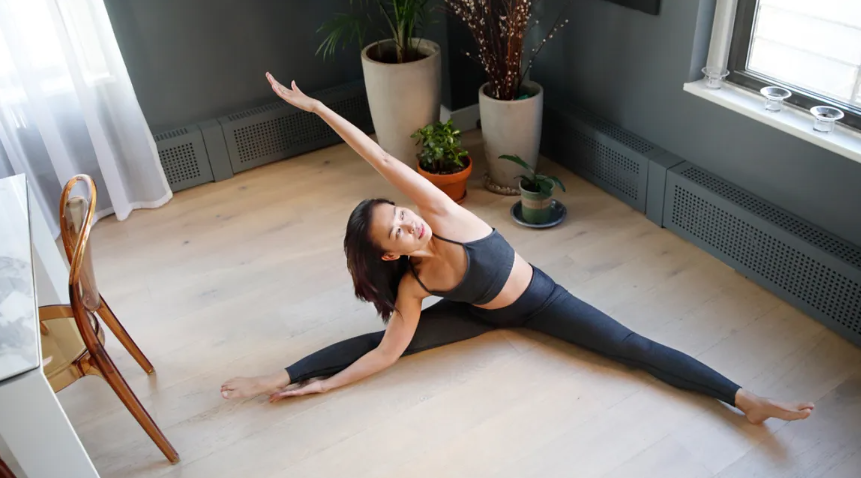A healthy and ideal posture is the dream of many people. To achieve this dream, you can try different forms of flexibility exercises. This exercise is so simple that you can even find examples of good flexibility in the form of text, pictures, or videos on the Internet.

Benefits of flexibility exercises
But before we talk about the form or method of flexibility training. Learn about the various benefits of the following exercise:
Prevent joint pain
Did you know that the benefits of flexibility training aren’t unique to exercise? Those who do this exercise diligently tend to avoid joint pain. Flexibility is also good for preventing you from injuring your muscles during exercise. Why? Because the form of movement of this exercise helps your muscles to be better prepared. Muscle training or lifting weights greatly improves muscle performance throughout your exercise.
Benefits of flexibility exercises: Ideal posture
Do some flexibility exercises to keep your body in good shape and healthy. This exercise gradually improves unbalanced posture due to work or other things.
Maximizing other sports exercises
Did you know that the warm-up movements performed before strength training, cardio, or any other sport include flexibility movements? It means that this exercise will help you maximize the results of your next workout. Our advice: do a warm-up or flexibility exercise before training. The athletic performance will improve when your muscles are ready because the body doesn’t tire as quickly. If you could only exercise for 30 minutes before, the duration after the flexibility movement will be longer.
Makes the body more flexible and relaxed
This form of mobility training is closely related to body coordination and mobility. No wonder professional dancers are very agile and flexible when moving to the rhythm of the music. The additional flexibility moves you perform relax your body and mind, especially if you do this exercise in an environment with minimal air pollution.
Benefits of flexibility Exercise: Seed capital to learn to dance
Do you want to be a ballerina or a professional dancer? As a first step to prepare yourself, do some flexibility exercises to improve your body’s mobility and flexibility. Believe it or not, people with flexible or flexible bodies pick up dance moves more easily than those who don’t. Also, the dance movements of flexible people are much more beautiful than those of rigid bodies.
Forms and how to train flexibility
A flexible body can be your starting capital for various fun activities. Even follow specific sports. But do you know the form and how to train flexibility?
Flexibility Exercise Form: Dynamic Stretching
Before exercising, a physical education teacher or a professional trainer always tells you to warm up first, right? So what is dynamic stretching? This stretch is broken down into different types of flexibility exercises focusing on the neck, shoulder, and hip muscles.
An example of hip flexibility is touching the wall with one hand and then swinging your leg. To increase the flexibility of the shoulder muscles, please stand with your arms outstretched. Next, alternately rotate your arms back and forth. Dynamic stretching isn’t difficult. Aside from these two example moves, there are several other moves that you can combine.
Flexibility Exercise Form: Static Stretching
What is the difference between static stretching and dynamic stretching? Alongside examples of different flexibility moves, the timing is different. This static stretch is performed post-workout for 5-10 minutes. The form or model of static stretching is much simpler.
For example, you can sit on the mat and grab your toes with both hands. Hold this position for a few seconds before releasing your hands. The next step is just as easy. While still sitting, please bend your legs so that the soles of your feet touch. Position your hands on each foot. This movement helps stimulate the lower body muscles.
Leg-reach bridge
Have you memorized how to practice good and correct mobility in the first and second points? Continue this flexibility exercise by trying specific variations of movements, one of which is the leg-reach bridge. Aside from forcing the body to balance, this exercise also stimulates your abs, pecs, leg, and even hip muscles.
First, lie on the mat with your hands above your head. Slowly raise your buttocks while bending your knees (your posture should be straight). This movement also increases the heel position (only toes, shoulders, head, and hands are attached to the mat).
Flexibility Exercise Form: Hip Flexors
Still curious about hip flexibility exercises? Besides the leg reach bridge, you can also try this hip flexor move. The first step is to bring your body into a lunge position and then push your legs forward until your knees bend. Hold this hip flexor position for a few seconds, then switch legs. Your hip flex movements should last at least 30 seconds before changing positions.
Flexibility Exercise Form: Lying Pigeon
The benefits of flexibility training encourage you to try all common flexibility exercises. One of them is this lying dove. Those who have taken yoga classes before have probably learned this pose. The lying dove is a simple and easy yoga pose. Exercise is also good for back pain.
Starting position, please lie down on the yoga mat with your knees bent. Then bend your right leg and place the sole of your foot on the thigh of your left leg. After that, raise your left leg and maintain balance by placing both hands behind your thighs. Finally, slowly pull your left leg forward and wait a few seconds. Remember to try the same movement with another leg.
So, do you know the examples of movements and benefits of flexibility exercises? In addition to trying some of the flexibility exercises above, you can always try Pilates or yoga poses. Both sports have many appropriate movements to make your body more flexible.
